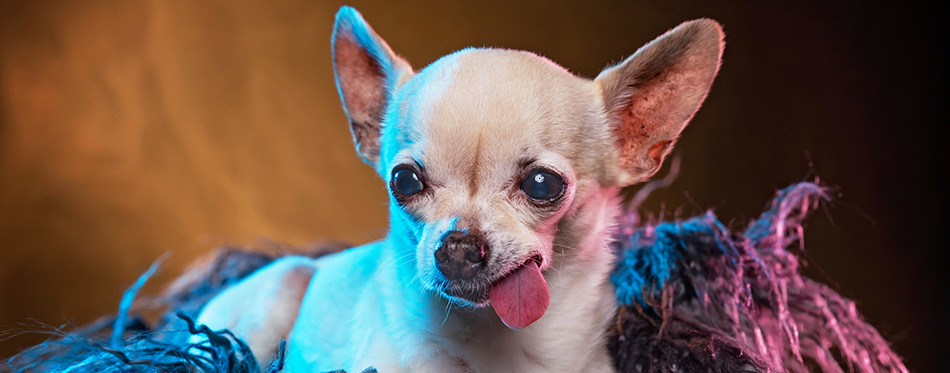The tongue is a very powerful muscle. It can hurt someone else’s feelings without the other person realizing it. While dogs cannot use their tongues to communicate with us in a comprehensible manner, they can use it to convey their thoughts in a manner that we can decipher. This is just one of the 9 amazing facts that many pet parents do not know about the dog’s tongue. Getting to know more about this wonderful organ can help us better care for our furry four-legged canine pals.
The Dog’s Tongue is Not Any Cleaner Than the Human Tongue
One of the most widely-held beliefs about the canine tongue is that it has healing properties. That’s why people always refer to the adage, “lick his wounds” whenever they describe a person trying to heal himself. Unfortunately, the dog’s mouth can contain at least 600 different types of bacteria. This is almost the same number of types of bacteria present in the oral cavity of humans.
When dogs lick their “wounds”, they are not healing it or disinfecting the area. What they are doing is removing the dirt, debris, and other particles present in the wound. The presence of any particle on the surface of the wound can worsen the pain and discomfort that the dog may feel. Hence, it has this need to remove such particles.
Some people allow their dogs to lick their own wounds. Don’t do this. The dog’s tongue contains as many bacteria as your mouth. Letting them lick your wounds will introduce these microorganisms into your wound and cause further infection.

Dogs Have Fewer Taste Buds Than Humans
On the average, a dog will have about 1,600 to 1,700 taste buds scattered all over its tongue. By comparison, humans can have up to 10,000 taste buds. Regardless of the number, however, dogs can still taste sweet, sour, bitter, and salty things.
You might think this puts them at a disadvantage. Not quite. You see, dogs may have fewer taste buds, but the scent receptors on their noses outnumber those in humans. They don’t need to taste their food to know that it’s delicious. They only need to smell it even from afar.
Compared to cats, dogs have more taste buds. Cats also don’t have taste buds for things that are sweet. Dogs may have fewer sensitive tongues than humans but they can compensate for it by having more sensitive noses.
Dogs Use Their Tongue as a Modest Grooming Tool
Very few pets can surpass or at least match the fastidiousness of the cat. You can see them licking their fur almost every minute. You can also see dogs grooming themselves. What you should know, however, is that basic biology prevents dogs from grooming themselves in an efficient manner.
Compared to the feline tongue, the dog’s tongue has a smooth surface. It doesn’t contain the tiny barbs called “papillae” that are present on the cat’s tongue. These tiny barbs act like the tines of pet brushes, allowing the cat to remove deeply-embedded dirt in their coats. When the cat licks its coat, its tongue acts like a comb or hairbrush.
This does not mean the dog’s tongue doesn’t have any purpose anymore. It is to clean itself up by removing larger particles and debris on the surface of its coat. Deeply-embedded dirt and debris is a different matter, unfortunately. This is where regular combing and brushing of its coat can help. Head over to our reviews of dog flea combs and dog shedding brushes for more choices.
The Canine Tongue is a Great Cooling Aid
There are dog breeds that tend to overheat very fast. These include dogs that have very short muzzles or flat faces. Regardless of their breed, however, dogs do not have a very efficient way of regulating their body temperatures. They do have sweat glands but these are only located in their noses and paw pads.
Hence, the most efficient way for them to cool down is by panting. When dogs pant, they have to relax their tongue to open the upper airways. This allows the moisture on the surface of the upper airway walls to evaporate. When it does, it also brings the dog’s core body temperature down.
Pet owners should always observe how a dog pants. If it becomes heavy, it is often a sign of overheating. Excessive panting is the dog’s way of increasing the rate of evaporation of heated moisture from the upper airways. As such, if you see your pet panting heavily, help it out by giving it cool water to drink and putting it in a cooler environment.
You may also like our article on Dog Cooling Pads.
A Dog’s Tongue Can Influence the Sound of Its Bark
One of the reasons why we can talk is because of our tongue and our ability to move them at will. Cut off the tongue and it will be almost impossible to pronounce the letters of the alphabet in a manner that is comprehensible.
The same is true with dogs. And while they don’t use their tongue to produce words to speak with us, they can use it to bark. The sound of a dog’s bark is a function of its vocal cords. However, the size and shape of its tongue can also have an effect on the overall sound of the bark.
The size of the opening of the dog’s throat can have an impact on the depth and timbre of its bark. And since the tongue can affect the size of this opening, it has a way of affecting the quality of the bark, too.

Canine Tongues are Tools for Expressing Emotions
You may already know that dogs love to lick their owner’s faces, hands, and feet. But did you know that they do it to express their emotions? It’s an adorable sight when you see a dog licking its owner’s face with that characteristic glee in its eyes.
It is not easy to prove that dogs lick us because they are happy. However, the general observation is that dogs lick the face of other dogs when they are either excited or very happy. You don’t get to see a dog licking another dog’s face when it is angry or sad.
There is one word of caution, though. Never let your dog lick your face. It may have periodontal disease that can transfer the microorganisms to you. Plus, we already mentioned the fact that it can harbor at least 600 different types of bacteria.
Not All Dogs Have Pink Tongues
One excellent indicator of good tissue oxygenation is a pink-colored tongue. This goes to show that the dog is receiving ample oxygen in its blood and tissues. However, not all dogs have pink as their normal tongue color. Some breeds like the Shar-Pei and the Chow Chow have a blue tongue.
Keep in mind that this bluish hue has nothing to do with a medical condition called cyanosis. In cyanosis, there is less oxygen and more carbon dioxide in the blood. This gives the blood a bluish tinge. It often occurs because of a problem in the dog’s heart or lungs. It can also be a sign of a serious, but very rare hemoglobin disease.
But for dogs like the Chow Chow, having a bluish tongue is normal. Vets will have to utilize other ways to determine the oxygenation status of these breeds, though.
Some Dogs Have Bigger Tongues Than Normal
There is a very rare condition in dogs known as “macroglossia”. This is a very large tongue that is often the result of congenital hypertrophy of the tongue tissues. It can also be due to increased muscle tension which can lead to the loss of elasticity. Macroglossia can also be secondary to a disease condition like cancer, amyloidosis, and hypothyroidism.
Whatever the cause, the tongue can get so huge that the dog may not be able to eat and drink as normally as it should. If it’s congenital, the puppy may not be able to suck well from its mother’s teat.
There are also some breeds of dogs that may have larger-than-usual tongues. A good example of this is the Boxer.

The Way Dogs Use Their Tongue to Drink is Different From That of Cats
We know that dogs and cats use their tongues to draw water to the back of their throats. However, there is a unique difference in the way they do it.
Cats only dip the tip of their tongue in water and pull water into the mouth. As soon as the water is up, cats snap their jaws shut so that the water will not spill from their mouth.
On the other hand, a dog will shape its tongue like a small spoon. It curls its tongue backward to help “scoop” water. It then puts the water at the back of its throat. It’s the classic lapping process that we’ve all come to associate with dogs.
Most of us may take the dog’s tongue for granted. With these 9 amazing facts about this wonderful canine organ, we’re hopeful you will have a more profound appreciation of your pet.

